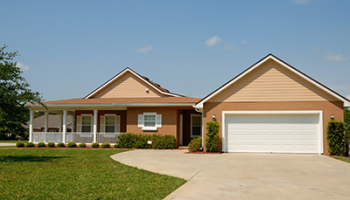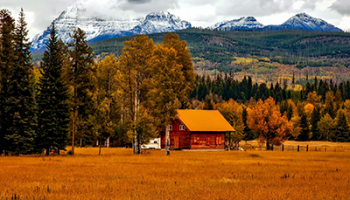USDA Home Mortgage FAQ
Williamsport USDA Home Mortgage FAQ
You may have heard the term USDA Rural Housing loan, but are unsure what it means. To gain some clarity, we discussed USDA Rural Housing home mortgage loans with Williamsport mortgage broker D. Shane Whitteker. Shane is the owner and chief broker at Principle Home Mortgage, in Williamsport, PA. Here are some common questions and straightforward answers.
What is a USDA loan?
A USDA loan allows specific individuals to build, rehabilitate or buy homes in rural areas when they might not otherwise qualify for other loan programs. The program provides a 90% guarantee on home loans to financial institutions, so they are more willing to take chances on loans they might not otherwise approve.
Whitteker notes that a USDA loan is sometimes misunderstood.
“A USDA Guaranteed Rural Housing loan is a loan insured by the USDA and underwritten according to their guidelines. This loan is designed to facilitate moderate income homeownership in less developed areas,” Whitteker explains. “It’s not totally limited to what people would consider rural areas but the larger the town, the less likelihood to geographically qualify.”
Who does a USDA Rural Housing loan work best for?
A USDA loan works best for people who have a low-to-middle income who desire to own a home in a rural area. The applicant must be a citizen, non-citizen national or qualified alien. The individual or family must have a desire to live in a rural area. Since these loans require no down payment, they can be perfect for those having trouble coming up with enough to get a traditional home mortgage.
I'm not a farmer. Can I get a USDA Rural Housing loan?
You do not have to be a farmer to get a USDA Rural Housing loan.
- The person getting the loan must make less than 115% of the average income in the area.
- The loan must be within one of the hundreds of specified rural regions across the United States.
The applicant with a credit score of less than 680 may not qualify for a mortgage payment, including principal, interest, insurance, and taxes, more than 28% of their income. Furthermore, they must not be paying more than 41% of their income towards other debt payments. Generally, the borrower must show 24 months of steady employment. The person getting the loan cannot have any debt obligations placed for collections within the last 12 months unless the payment was late for circumstances that were temporary and beyond your control.
Why was the USDA Home Loan Program Created?
According to Whitteker, it’s all about infusing rural America with vitality.
“The objective in creating this loan was mainly done to help expand homeownership in more rural communities and small towns,” Whitteker explains. “The income limits also ensure that this loan is designed to help people in the lower to middle income brackets. This loan can be used to acquire a home with almost no money out of pocket.”
The purpose behind the program is to improve the quality of life in rural America. Furthermore, the program is designed to improve the economy in rural America by encouraging hard-working individuals to settle there and help build the community’s future.
Are there any downsides of a USDA loan?
While there may be scattered areas in bigger cities and suburbs, generally, a person has to be willing to live in a town of fewer than 35,000 people. The individual must buy mortgage insurance, which can often be included in the total loan package. You will not qualify if you make more than the income limit set by the USDA. The purchase must be for a single-family home, so it cannot be used where the person wants to buy a duplex and live in a part of it while letting the other part generate income.
Whitteker says that while there are easier home mortgages to qualify for, there are no real downsides of a USDA home mortgage.
“The USDA guaranteed rural housing loan is a harder loan to qualify for, compared to an FHA loan for example. The debt-to-income ratio requirements and the credit requirements are stricter which does ensure a lower default rate on the program but also makes it a bit more difficult to qualify for,” Whitteker says. “The geographical requirements are also prohibitive to some potential clients. I don’t see any significant downsides to this program. In general, this loan facilitates what it was designed to do.”
What could cause me to be rejected for a USDA home loan?
You must have verifiable income, so people who freelance or work on short-term contracts may not qualify. If you have changed employment in the last two years, then you may be denied. You must be looking at a property where your payments will be less than or equal to 28% of your income, and your proposed housing payment along with other debt payments cannot total more than 41% of your income. Your credit score is essential, and you can be denied if you have accounts placed in collections in the last 12 months. The home that you want must be appraised and meet property condition requirements.
What can types of home can I buy with a USDA mortgage?
You can only buy single-family homes that will be your primary residence with a USDA loan. While there are exceptions, generally, the house needs to be in a community with less than 35,000 people.
“You are limited to purchasing residential properties,” Whitteker explains. “Some banks allow for the purchase of a double wide manufactured home, but the restrictions based on this property type make it very difficult. Overall, this product is designed for the purchase of a single-family residence in a designated area.”
Can I refinance my conventional loan as a USDA Rural Housing loan?
No, you can not refinance a conventional loan with a USDA loan. You can refinance a USDA loan with another USDA loan or replace it with a traditional mortgage.
Am I constrained with what I can do with my home if I get a USDA loan?
Yes, there are restrictions on what you can do with a home that has a USDA loan on it. You must use the home as your primary residence. In other words, you cannot rent out the home. You can sell the home.
“There are loan limits that are set by state, county, and sometimes city. The mortgage itself is more restrictive than other types of mortgages but not drastically,” Whitteker says. “The main difference is the debt-to-income limit of 41%. This does make it more difficult for some potential borrowers, but really isn’t a bad idea for the solvency of the program. The stricter guidelines on DTI and credit create a lower percentage of default, which helps to ensure the program will be around to keep helping promote home ownership in rural areas.”
Is a USDA home loan more difficult to get than a conventional mortgage? Are there loan limits?
In most cases, it is easier to get a USDA loan than a conventional mortgage. You have to make under a certain amount determined by your area and the number of people in your family. Additionally, the property must be worth under a certain amount. These limits are set by county across the country.
If you think you may qualify for a USDA loan, and would like to learn more, contact Williamsport mortgage experts Principle Home Mortgage today at (570) 980-9359.
VA Home Loans In Williamsport: A Primer
If you're looking for a Williamsport VA home loan, this article will give you a solid foundation. VA home loans - in Williamsport or anywhere else in Pennsylvania - are one of the best ways to obtain a home mortgage.
Step-By-Step Guide to Being a First Time Home Buyer
As a first time home buyer, you'll have a lot of questions. Check out our Williamsport First Time Home Buyer Guide for answers.
First Time Williamsport Home Buyer Mortgage Tips: The Inside Scoop
If you're considering buying a home in Williamsport - or anywhere else in Pennsylvania, you're guaranteed to learn something new in this informative guide.




